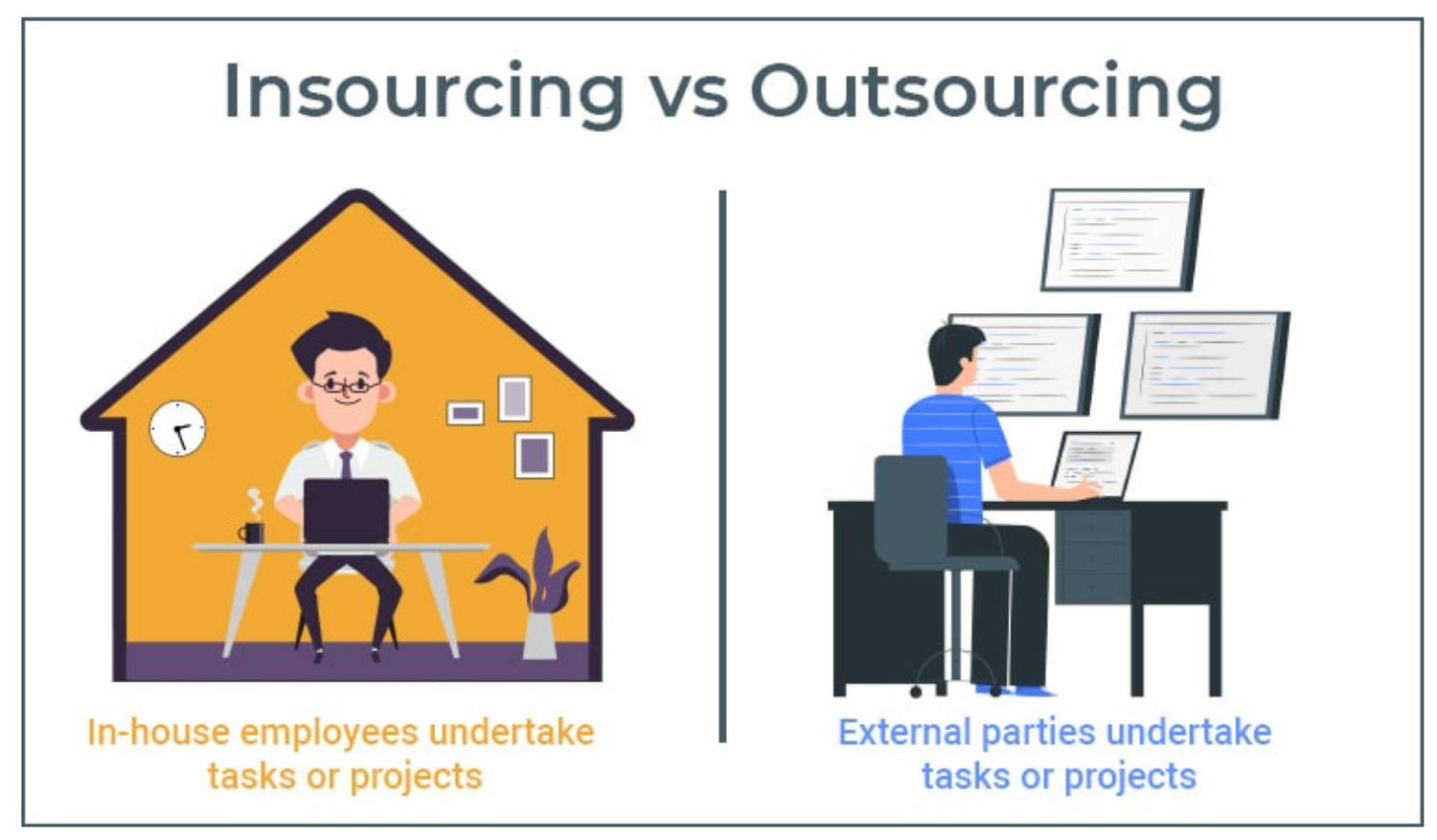
In the realm of business operations, the strategic choice between insourcing and outsourcing plays a pivotal role in shaping organizational efficiency and success. This article explores the nuances of insourcing and outsourcing, examining their advantages, disadvantages, and critical considerations to assist businesses in making informed decisions aligned with their objectives.
Insourcing: Leveraging Internal Strengths
Insourcing, the practice of keeping business functions within the organization, offers a range of advantages. Firstly, it provides unparalleled control and oversight, allowing companies to make real-time adjustments and maintain adherence to established standards. Leveraging in-house expertise ensures that employees are deeply familiar with the company's culture, objectives, and processes, fostering a higher degree of specialized knowledge and skill. For better understanding, take a look at insourcing examples here.
Moreover, insourcing contributes to intellectual property protection by keeping critical processes in-house, safeguarding sensitive information and proprietary knowledge. Despite these benefits, insourcing comes with challenges, including resource intensity, limited scalability, and the potential for dependency on internal talent.

Advantages of Insourcing
1. Control and Oversight
Insourcing provides direct control and oversight over all operations, allowing real-time adjustments, adherence to company standards, and immediate responses to evolving needs.
2. In-House Expertise
Utilizing internal talent ensures employees are well-acquainted with the company's culture, objectives, and processes, fostering a higher degree of specialized knowledge and skill.
3. Intellectual Property Protection
Critical processes kept in-house enhance the protection of intellectual property, safeguarding sensitive information and proprietary knowledge.
Disadvantages of Insourcing
1. Resource Intensity
Insourcing demands substantial investments in infrastructure, technology, and talent development, posing potential financial strains, especially for smaller enterprises.
2. Limited Scalability
Scalability within insourced operations may be constrained by internal resources, making it challenging to swiftly expand or contract in response to market fluctuations.
2.3 Dependency on Internal Talent
Over Reliance on internal talent may lead to a lack of fresh perspectives or specialized skills, potentially hindering innovation and adaptation to industry trends.
Outsourcing: Tapping External Expertise
Outsourcing, the strategic delegation of certain business functions to external partners, offers compelling advantages. Cost efficiency is a primary allure, as businesses can access specialized skills at a reduced cost, eliminating the need for substantial investments in infrastructure and training. Scalability and flexibility are inherent benefits, allowing organizations to swiftly adjust operations in response to market changes. Access to a global talent pool is another boon, broadening the spectrum of available skills and fostering diverse perspectives.
However, outsourcing comes with its challenges, notably the potential loss of direct control and immediate oversight, communication complexities due to time zone differences, language barriers, and concerns about the quality of work. Striking a balance between these advantages and challenges is essential for organizations navigating the outsourcing landscape. Here you can check some examples of outsourcing.
Advantages of Outsourcing
1. Cost Efficiency
Outsourcing provides access to specialized skills at a reduced cost, eliminating the need for substantial investments in infrastructure and training.
2. Scalability and Flexibility
Outsourcing offers a level of flexibility that is often difficult to achieve with insourcing, enabling businesses to scale operations up or down swiftly in response to market changes.
3. Access to Global Talent Pool
Beyond geographical boundaries, outsourcing taps into a global talent pool, broadening the range of available skills and fostering diverse perspectives and innovative solutions.
Disadvantages of Outsourcing
1. Loss of Control
Ceding certain business functions to external partners may result in a loss of direct control and immediate oversight, potentially impacting adherence to company standards and values.
2. Communication Challenges
Time zone differences, language barriers, and cultural nuances can pose communication challenges in outsourcing relationships, affecting project timelines and overall efficiency.
3. Quality Concerns
While outsourcing can bring cost savings, concerns may arise about the quality of work. Differences in standards, regulations, or work ethics can lead to variations in the output compared to in-house operations.
Finding the Right Balance: Key Considerations
Strategic Alignment
Insourcing or outsourcing decisions should align with the organization's overall strategic goals. Critical functions contributing to a unique value proposition may be best kept in-house, while non-core activities can be outsourced for efficiency.
Cost-Benefit Analysis
A thorough cost-benefit analysis is crucial, considering not only immediate costs but also long-term implications. Insourcing might involve higher upfront expenses, while outsourcing may incur hidden costs, such as management and coordination overhead.
Industry Dynamics
The nature of the industry plays a significant role in the insourcing vs. outsourcing decision. Industries with rapidly changing technologies or unpredictable market demands may find outsourcing more adaptable and responsive.
Risk Management
Assessing risks is vital. Insourcing may minimize certain risks, such as data security concerns, while outsourcing might introduce risks associated with reliance on external partners. Mitigating these risks requires a comprehensive risk management strategy.
Conclusion
In the pursuit of operational excellence, businesses must adopt a holistic approach to insourcing and outsourcing decisions. The landscape is diverse and requires a careful balance that aligns with the organization's unique goals, industry dynamics, and risk tolerance. By navigating the advantages and disadvantages of insourcing and outsourcing, businesses can strategically position themselves for success in a competitive and ever-evolving marketplace.















